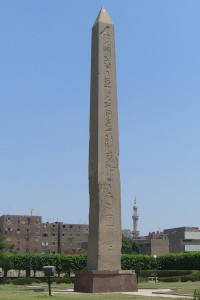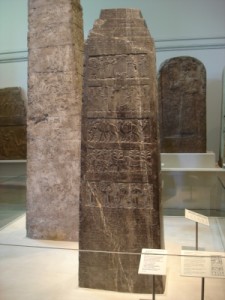Confronting Pseudo-Archaeological Memes Pt 2 – Are obelisks really… well, you know….
 Do I need to say it? Have you seen the memes linking ancient obelisks with fertility gods? That they are really phallic symbols and that the reason we have one in Washington D.C is because the Washington Monument represents the “Father” of our country?
Do I need to say it? Have you seen the memes linking ancient obelisks with fertility gods? That they are really phallic symbols and that the reason we have one in Washington D.C is because the Washington Monument represents the “Father” of our country?
Is there any truth to this at all? Well, let’s look at the archaeological data and see.
First – let’s get the definition
Obelisk – a shaft of stone (usually granite) with a pointed top; word comes from Greek obeliskoi: which means little spits or meat skewers
Now what was the purpose of the obelisk? According to Egyptologist Barbara Watterson:
“Obelisks were cult symbols of the sun god (referring to Re), and date back to predynastic times when they were worshipped as models of the miraculous shaft of stone upon which the sun was to place itself upon first rising.” (The Gods of Ancient Egypt, 1984, pg 68)
Richard H. Wilkinson offers the following interesting tidbit about obelisks: Baboons, who were thought to greet the rising of the sun (hence their noisiness in the morning), are often featured on the pedestals of obelisks (Reading Egyptian Art, 1992, pg 73)
Re, better known to the western world as Ra, was probably the least sexually oriented god in the Egyptian pantheon. Whereas many others were incestuous, marrying their brothers and sisters, Re was a creator god who created both gods and people without any indication of fertility apart from his words, his sweat (used to create the other gods) and his tears (used to create humans). This is decidedly UNLIKE other Egyptian mythologies about the creation of humans – but we cannot take those stories into consideration in our discussion of obelisks, which were associated with the worship of Re, centered in Heliopolis.
There are currently twenty-eight surviving Egyptian Obelisks worldwide, and only eight of them are still in Egypt. None are associated in any way, shape or form, with any sort of fertility worship. Re was the sun god – he spent his days sailing across the sky in his sun barque and his nights sailing through the Netherworld in his night barque – no time or need for fertility.
I have a stack of books dealing with fertility gods and goddesses written by serious scholars, people with credentials who are subject to per review, and archaeologists and not one, not even one, mentions obelisks in reference to them.
Now, we do see obelisks in other ancient Near Eastern cultures in the form of historical monuments where histories and great victories were recorded – but still, they are not associated with any sort of fertility, they are just monuments. For example, the Black Obelisk of Shalmanesser III, an important witness to the Biblical King Jehu.
Look, I used to believe this one because it seems obvious and it was kind of funny. But the archaeology is clear – the obelisk is a sun needle, a resting place for the sun, and we cannot read more into it than that without sacrificing the truth. No real archaeologists are even debating these facts – despite many armchair theorists wanting to connect unconnected concepts for their own religious purposes. Not everything that is heathen is sexual in nature, and the obvious is quite often the product of our modern over-sexualized imagination and wishful thinking.
Always remember that anyone can make up an amusing meme or post something on the internet but that doesn’t make it true. Not only doesn’t it make it true, but like posting urban legends and spoof stories, it severely damages our witness as believers. It makes us laughing stocks – and when that happens, it causes the Name of our King YHVH to be brought to shame. If we can’t prove it, then we shouldn’t post it. The information is either there, or it isn’t – let’s do our homework.
(Note: Before anyone brings up the Asherah “pole” I would challenge them to (1) find a reference linking them to obelisks and (2) find any proof that an Asherah was actually a pole (they are merely called Asherah in scripture and we have no solid proof of what an Asherah was among archaeologists, only theories))
